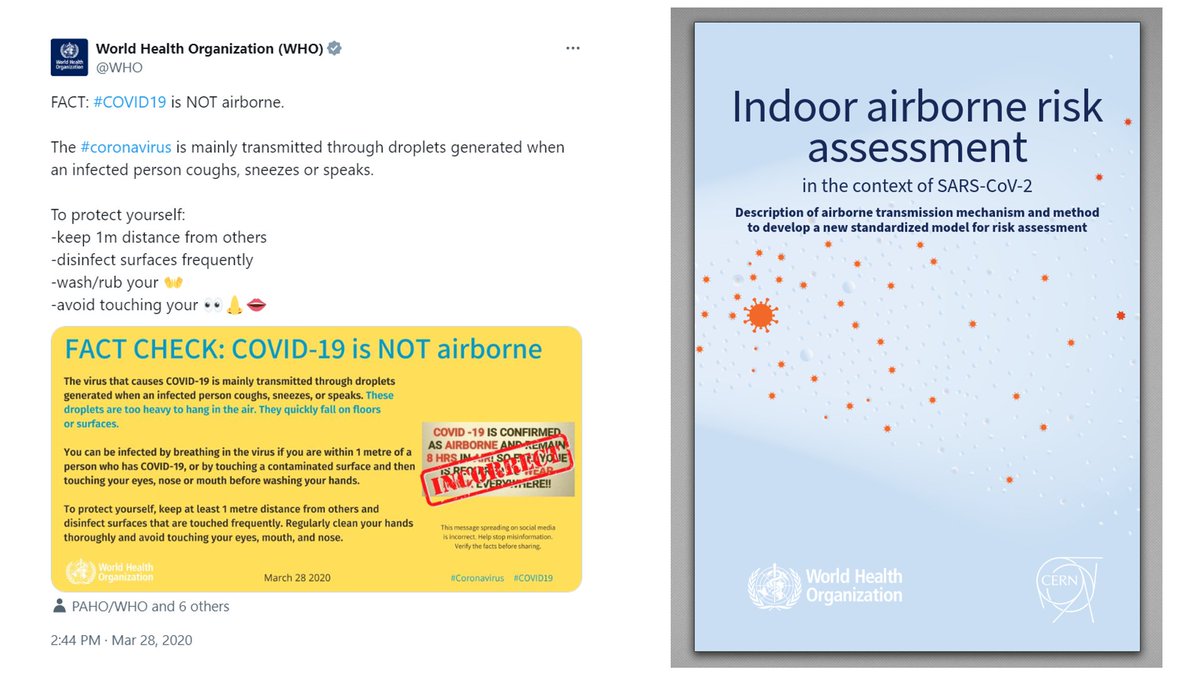#corsirosenthalbox flow tests for Lasko 3733 and 3M Filtrete 1900 20x20x1 filters.
Shroud optimization: 20 cm radius (15.75" diameter) /1
Shroud optimization: 20 cm radius (15.75" diameter) /1

Effect of shroud size on outlet flow. Having a shroud is important, but don't stress over it. Without it, air flows backwards at the corners instead of through the filters. /2 

The supply voltage makes a difference! Fan speed changes linearly with voltage. Here's the flow range for the accepted 110-125V variation of the nominal 120 V North American distribution supply: /3 

Like with flow, the variation in voltage supply directly affects the fan power consumption in watts. /4 

But here's what we really want to know: How can we compare a homemade air cleaner made with quality furnace filters to a commercial HEPA air cleaner? Here's the estimated comparable ratings for this Lasko 3733 with 3M Filtrete 1900:
252 CADR, room size 390 square feet. /5
252 CADR, room size 390 square feet. /5

With these estimations in mind, variations of these air cleaners can be tested for performance in accordance with AHAM AC-1-2020 standard. NOTE that in more recent versions it specifies tests at 115 V. Earlier versions specified 120 V. /6
So if we were to do an independent comparison today, we would be testing at 115 V even though supply voltage to homes is 120 V or higher in practice. Here's the estimations at 115 V: /7 

Smoke CADR is intended for removing cigarette smoke. What about for viruses? Can we use a larger target particle size? Thread asking for discussion: /8
https://twitter.com/DavidElfstrom/status/1457397466664513541?s=20
Back to the shroud, I tested it without one at all, and the flow is lower than if there's the optimal size shroud running on speed 2 instead of speed 3. So adding a shroud is like getting an extra speed setting! /9 

This is a 23% improvement over no shroud. When I did it before, I got 36% improvement. Why? The greater the resistance on the inlet, the more likely air will be drawn in at the front near the tips. Earlier test was done with only one filter.
https://twitter.com/DavidElfstrom/status/1427112878616817669?s=20
• • •
Missing some Tweet in this thread? You can try to
force a refresh


![States high levels of CO2 and other contaminants ... can contribute to [list of five health effects, such as headaches, fatigue, difficultly concentrating], says CO2 should be below 1000 ppm, then says (incorrectly) that health effects from CO2 occur at levels above 5000 ppm. No, those effects can occur below 5000 ppm. It also states the CO2 concentrations do not indicate a risk of infectious disease transmission in a space. No, ASHRAE's position statement on CO2 states that elevated CO2 concentrations CAN reflect higher risk. Obviously, because it indicates poor ventilation, which IS an i...](https://pbs.twimg.com/media/GO6z_36WQAI7_mj.jpg)







